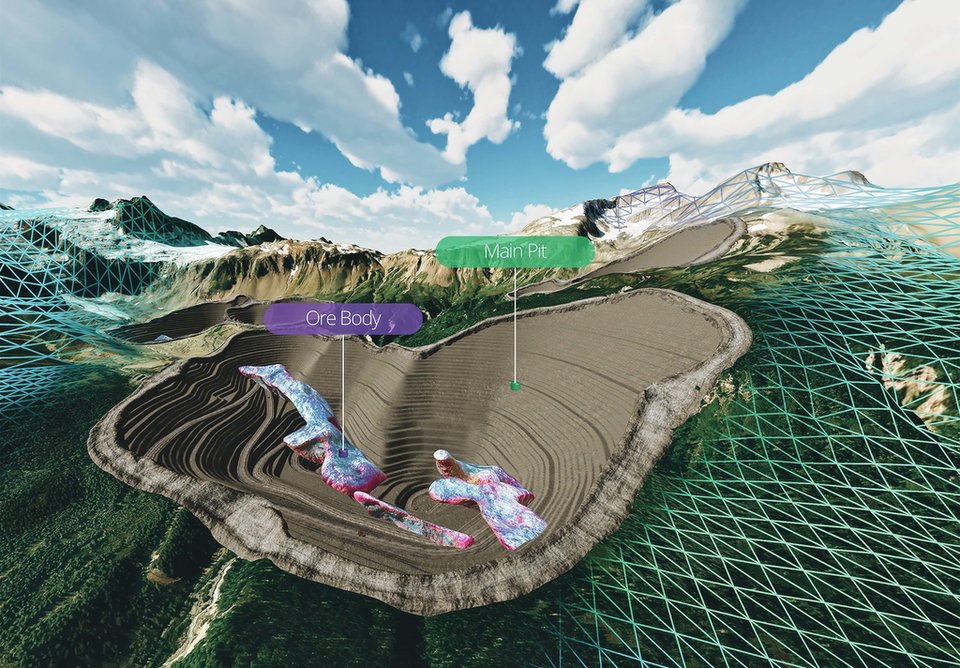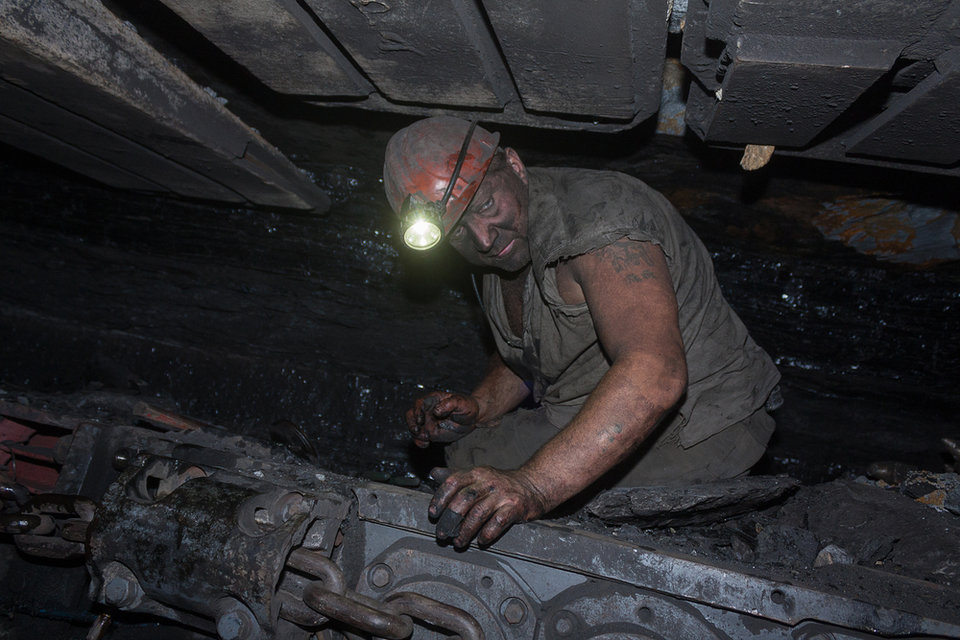A new dimension: bringing mine sites to life in 3D
Visualisation specialist LlamaZOO has partnered with mining tech firm Maptek to bring advanced 3D visualisation functions to the mining sector. Chris Lo considers what this project will bring to the visualisation space
Scroll down to read the article
A picture is worth a thousand words, or so the saying goes. The maxim is well-suited to technically complex heavy industries such as mining, which plays host to large mine sites that are intricate both in their development and in the vast reams of operational data they generate.
As digital technologies and 3D visualisation software continue to mature, a new world of opportunity is opening up for mining firms. The prospect of visualising an entire mine site in realistic 3D graphics, exploring it immersively through virtual reality (VR) and analysing overlaid information through augmented reality (AR) without having to trawl through siloed databases is starting to gain traction in the industry. The technology opens up new avenues in mine site planning, logistics, training and stakeholder engagement.
Visualisation technologies are making inroads in mining despite the industry’s traditional reluctance to embrace new and unproven concepts. “The truth is that many mining companies are still very hesitant about furthering their digital mining transformations in fear of cost, uncertainty, and mostly, fear of the unknown,” wrote Aveva communications specialist Rachel K. Carson in December last year, adapting research from the IDC Perspective: Mining Industry Transformation report.
Nevertheless, survey data cited by IDC Energy Insights suggests that while 3D visualisation is far from the top of the agenda for the digitisation of mining, it is now an established part of the industry’s digital toolbox. 27% of companies that responded to the WWDX in Mining Maturity Scope Benchmark Survey 2016 noted that they had invested in 3D visualisation – far below the 68% that said they had invested in mine automation, but still a strong presence and on a similar level of prominence to drone deployment (26%) and investment in the Internet of Things (33%).
Maptek, LlamaZOO partner on 3D visualisation tech
LlamaZOO is a 3D visualisation firm founded in 2014 and based in Vancouver and Victoria, British Columbia, Canada. The company has its roots in gaming software; co-founders Charles Lavigne (CEO) and Kevin Oke (vice president of business development) are veterans of the video games industry and conceived LlamaZOO as a way to apply their experience to real-world problems.
“The benefit of borrowing from frameworks from the game industry, such as game engines or mature libraries like DirectX, is the speed at which products and solutions can be developed,” Lavigne says. “These libraries have been battle-tested and used in multi-million dollar productions ranging from the tens to hundreds of millions in budget. To not leverage these technologies is leaving incredible value on the table. No one but a select few goes out and builds their haul trucks from the ground up.”
In August, LlamaZOO and mining technology firm Maptek announced a partnership to take mining visualisation a step further. The project represents a fusion of the two companies’ products and expertise, and will allow for the creation of digital twins of mining assets with spatial data and real-time information layered into the simulation. All of this will be presented, according to the partners’ August press release, “in a format typically only seen with high-end video games”.
“Our visualisation software MineLife connects to and ingests data from industry standard tools already in practice, such as Maptek’s Vulcan,” Lavigne notes. “By then visualising this data with data from other sources such as GIS, or routing, or IoT data, it allows for new context and insights to be derived. LlamaZOO’s data fusion technology is being integrated with Maptek’s artificial intelligence and machine learning development. In the near future we see a real-time connection between the two products, and other industry tools, as inevitable.”
Whether the subject is mine development, operational management or presenting a project to investors, the ability to remotely share an accurate visualisation that can be viewed and interacted with by stakeholders all around the world means that everyone is viewing the same up-to-date information, without the need for endless site visits.
“Imagine viewing live data, such as trucks and shovels, loaded train cars and material stockpiles, in real-time,” said Maptek core technologies product manager Chris Green in August, describing the digital twin as “virtually a risk-free mode for decision-making”.
Our visualisation software MineLife connects to and ingests data from industry standard tools already in practice

MineLife VR bornite ore in pit.
Credit: LlamaZOO
Mining is a risk-averse industry due to incredible safety concerns and small margins due to depressed commodity prices
Selling visualisation to the mining business
Running a business that involves pitching the benefits of visualisation to mining firms, Lavigne has a perspective on both sides of the coin for miners – scepticism of unproven technologies duelling against the fear of being left behind by competitors.
“Mining is a risk-averse industry due to incredible safety concerns and small margins due to depressed commodity prices,” he says. “However, this does not mean they are not looking at new technologies, as they understand without moving forward they will be obsolete and out of business.”
LlamaZOO’s first product was EasyAnatomy, a 3D anatomy learning tool for veterinary students, but the company made its name in the mining industry with MineLife VR, a virtual reality platform that brings together huge volumes of data and presents it as a visual representation of the mine site, which users can explore within VR. MineLife grew out of LlamaZOO’s relationship with its first client in the mining sector, Teck Resources.
“Large amounts of siloed data existed across [Teck’s] organisation,” Lavigne says. “Providing a solution to fuse and make this data accessible in one place gave LlamaZOO the opportunity to develop MineLife VR, a 1:1 scale virtual replica of a mine from exploration to reclamation. Since starting MineLife with Teck, other mining companies such as Barrick Gold and Goldcorp have begun adapting the same solution to benefit their operations.”
More than half of the country’s coal mines are managed by pro-Russian separatist militia. Credit: DmyTo/Shutterstock.

Versatile visuals
Visualising mining data is no easy feat; LlamaZOO has developed in-house systems to facilitate high-quality rendering of large mine sites, while actually gathering the disparate datasets that will inform the visualisation is a major task in itself. The technology also fits a broad array of potential applications and modes of use between which mining clients may struggle to choose.
“With mining, there are a large number of use cases and scenarios that our clients are after, and in many situations they don't know what they're looking for until they see their data in our platform,” Lavigne says. “Data visualisations for desktop, VR, AR, and even mobile each have their own challenges, as does creating visualisations for planning, community engagement, training and so on.”
But this particular challenge also points to one of the strengths of visualisation in mining – versatility. The adaptability of the technology is beginning to be embraced by the industry, from Ontario’s Northern Centre for Advanced Technology showcasing VR induction training and AR-assisted firefighting simulation at the PDAC Convention this year to US-based Newmont Mining increasing its investment in VR for planning and community engagement. Visualisation tech may be new enough to continue drawing some scepticism from a risk-averse industry, but miners are increasingly coming to realise that gathering cold data into an accessible, visual format has a value that might well outweigh the cost and operational change required to make it work.
The technology also fits a broad array of potential applications and modes of use between which mining clients may struggle to choose